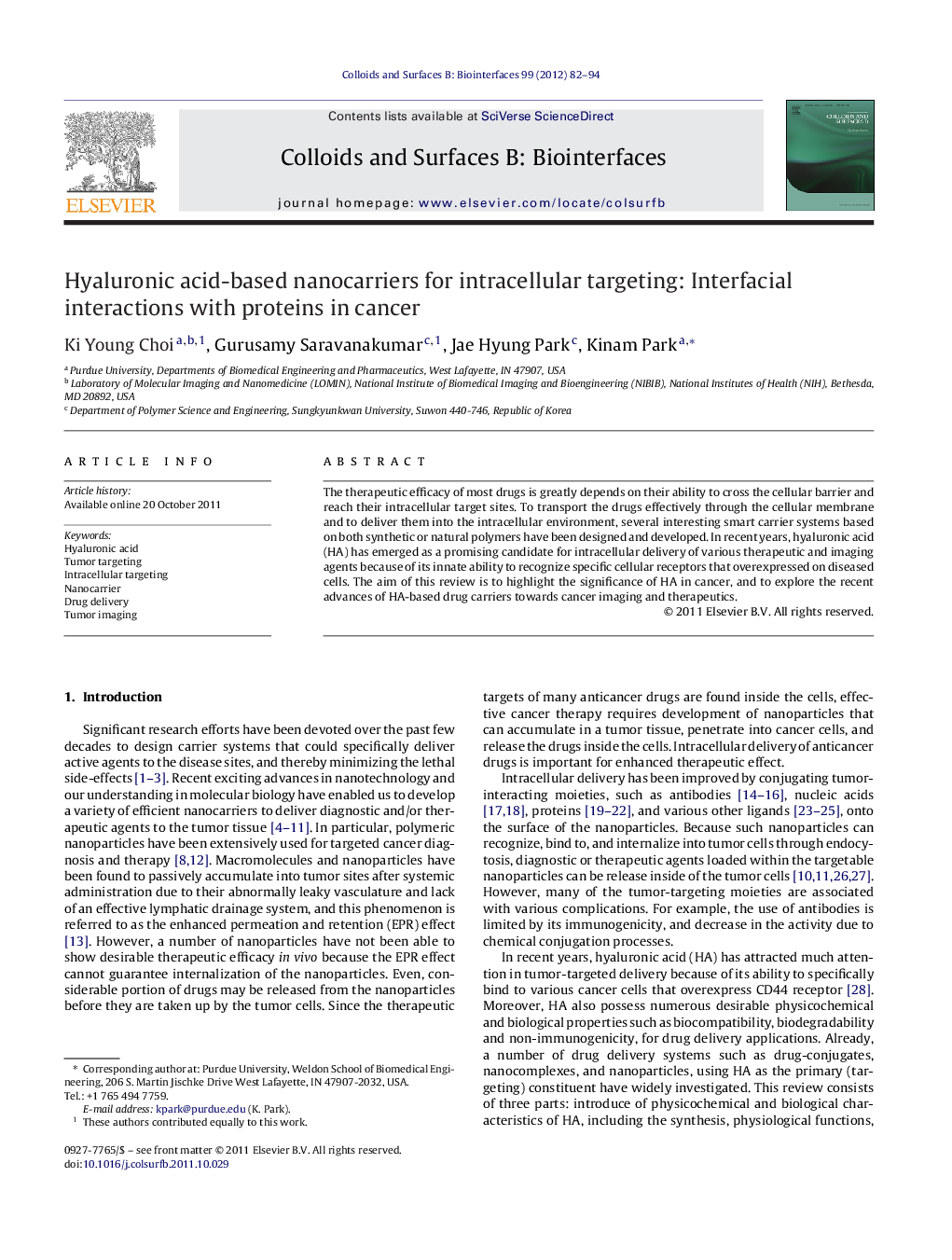| Article ID | Journal | Published Year | Pages | File Type |
|---|---|---|---|---|
| 600604 | Colloids and Surfaces B: Biointerfaces | 2012 | 13 Pages |
The therapeutic efficacy of most drugs is greatly depends on their ability to cross the cellular barrier and reach their intracellular target sites. To transport the drugs effectively through the cellular membrane and to deliver them into the intracellular environment, several interesting smart carrier systems based on both synthetic or natural polymers have been designed and developed. In recent years, hyaluronic acid (HA) has emerged as a promising candidate for intracellular delivery of various therapeutic and imaging agents because of its innate ability to recognize specific cellular receptors that overexpressed on diseased cells. The aim of this review is to highlight the significance of HA in cancer, and to explore the recent advances of HA-based drug carriers towards cancer imaging and therapeutics.
Graphical abstractFigure optionsDownload full-size imageDownload as PowerPoint slideHighlights► In recent years, hyaluronic acid (HA) has emerged as a promising candidate for intracellular delivery of various therapeutic and imaging agents because of its innate ability to recognize specific cellular receptors that overexpressed on diseased cells. ► The aim of this review is to highlight the significance of HA in cancer, and to explore the recent advances of HA-based drug carriers towards cancer imaging and therapeutics.
